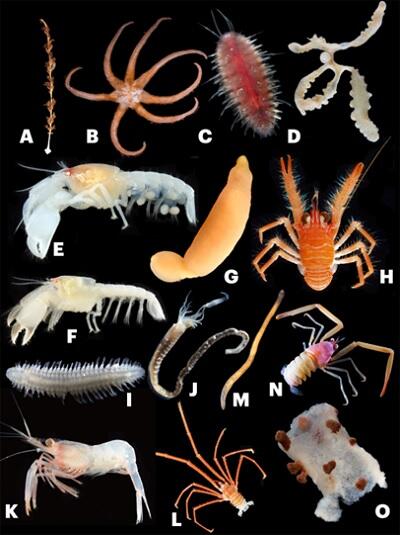Offshore Seabed Nature Conservation Areas are protected marine zones in the deep offshore seabed designated in December 2020 based on Japan's Nature Conservation Act. They include four areas: the southernmost part of the Japan Trench and areas around the Izu-Ogasawara Trench, areas including the Naka-Mariana Ridge and West Mariana Ridge, areas including the Nishi-Shichito Ridge, and the northern part of the Mariana Trench.
Principal Researcher Yoshihiro Fujiwara and his team from the Research Institute for Global Change (RIGC) at the Japan Agency for Marine-Earth Science and Technology (JAMSTEC) conducted a large-scale biodiversity monitoring survey in these Offshore Seabed Nature Conservation Areas. Specifically, they carried out ecosystem surveys in the four areas using the wide-area seabed research vessel "KAIMEI" in 2020-2021, and the deep-sea submersible research vehicle support ship "YOKOSUKA" in 2022-2024. The surveys spanned five voyages over a total of 58 days, including 19 dives with the remotely operated vehicle "KM-ROV," 11 dives with the manned submersible research vehicle "SHINKAI 6500," 6 dives with the autonomous underwater vehicle "YOUZAN," 11 casts with CTD rosette samplers, 22 casts with bait cameras, and 5 casts with free-fall landers.

Provided by JAMSTEC
Taxonomic identification of the collected organisms revealed about 500 species from 19 animal phyla. Among them, a total of 15 new species have been reported so far. These new species span five animal phyla (Cnidaria, Nemertea, Annelida, Arthropoda, and Echinodermata), with seven species from Arthropoda being the most numerous. The Nishi-Shichito Ridge Offshore Seabed Nature Conservation Area yielded the largest number of new species, with 10 of the 15 discovered there. The new species were discovered at depths ranging from 400 to 3,623 meters.
Additionally, age estimation of giant black corals discovered during the survey revealed the possibility that they are long-lived organisms exceeding 7,000 years of age. The survey also identified a new habitat for the Yokozuna Slickhead, known as a top predator in deep-sea areas exceeding 2,000 meters, within the offshore conservation area.
Most of the offshore conservation areas surveyed so far have shown minimal human impact and are in a highly healthy state, demonstrating the effectiveness of their status as protected areas. Going forward, continued collection of biodiversity information, including new species, and clarification of species distribution and ecology in deep-sea areas including offshore conservation areas are expected to promote understanding of vulnerable deep-sea ecosystems and allow accurate assessment of the impact of global environmental changes on deep-sea ecosystems.
This article has been translated by JST with permission from The Science News Ltd. (https://sci-news.co.jp/). Unauthorized reproduction of the article and photographs is prohibited.




